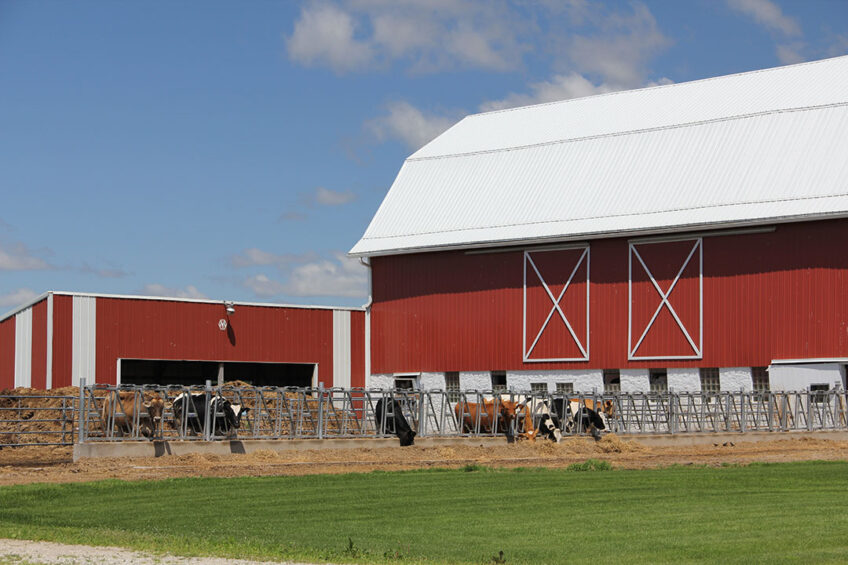US dairy: A look at sustainable strategies

In this article we take a look at the factors affecting the sustainability of the US dairy industry and approaches designed to improve sustainability.
The growing global population is constantly increasing the demand for milk and dairy products as a source of protein, minerals, and vitamins needed for human growth and sustenance. However, this ever-increasing demand enhances the intensity of dairy production systems and the environmental concerns associated with intensive dairy farming.
This is why the dairy industry must contribute to global food security in a sustainable way by developing safe, nutritious, and sustainable milk-based products. In addition, factors affecting the sustainability of the dairy industry need to be considered when developing policies for the US dairy industry.
Land use
Various factors including population growth, government programmes, and structural changes within the dairy industry impact land use. Allocation of the declining land base used for crop production is a key component of sustainability. On the other hand, it is essential to include the impact of government programmes on sustainability in programme planning and review.
Furthermore, the fast growth of biofuel production impacts the sustainability of the dairy industry, so government policy plays a key role in future trends in biofuel production. In addition, an in-depth economic and environmental impact analysis is needed to clarify the long-term effects of energy policy decisions on sustainability.
Using pasture-based production to contribute to food animal production reduces the competition with grain-based human food systems in case the land used for grazing is not suitable for growing grain crops. Efficient pasture-based systems are often characterised by high milk output per unit of land, whereas confinement systems are traditionally characterised by high milk output per cow.
Energy use
Modern dairies use electrical and petroleum energy sources for vehicles, pumps, motors, milking units and cooling, lighting, and heat abatement. Nearly 50% of the energy used on dairy farms is used for cooling milk, electrical water heaters and vacuum pumps and the remainder is used in the housing area including lighting, feeding equipment, ventilation, and manure handling.
Large modern free-stall dairies use less electrical energy per cow because of higher efficiency milk cooling systems, variable speed vacuum pumps, and heat recovery. However, long-day lighting and complex manure-handling systems in large dairy farms use more energy. In addition, indirect energy used to produce, package, transport, purchase, and sell the supplies must be considered.
Growing concerns regarding the increasing costs of non-renewable energy sources lead to increasing demands for alternative energy sources. Anaerobic digestion of dairy cow manure is a common method used in the US that creates volatile organic acids that are metabolised to methane and carbon dioxide. The benefits include the generation of renewable energy, odour reduction, mitigation of greenhouse gas emissions and possible reduction in pathogenic bacteria loading during the application of manure on the land.
Moving cows from confined housing systems to pasture-based systems would probably reduce the dependence of dairy farms on petroleum energy associated with non-milking aspects. However, many regions in the US are not able to support grass-based animal agriculture, especially when using cows with high genetic potential for milk production.
Water use
Livestock production systems account for nearly one-third of the water footprint of human activity, and 98% of this water footprint is the water required to produce feed. Increasing the efficiency of milk production and feeding diets containing more forage would reduce the water footprint of the dairy industry. In addition, selecting innovative feeding ingredients and formulating rations based on the water footprint are essential to improve the sustainability of the dairy industry.
Furthermore, with population growth and rising demand for non-farm uses of water, it is necessary to reform policies in water use, especially in more arid areas. Moreover, strategies including irrigating during the night to minimise evaporation and cultivation of forage crops that require less water are needed to refine irrigation practices.
Air emissions
Dairy production systems have an impact on the environment through greenhouse gas emissions, including carbon dioxide, methane, nitrous oxide, and oxides of nitrogen, ammonia, hydrogen sulphide, and volatile organic compounds. In addition to greenhouse gas emissions, particulate matter, including coarse dust and fine particles, is released.
The major sources of gaseous emissions in dairy cattle operations include the feed system, animal housing, manure collection, treatment and storage structures, and land application. Therefore, there is a need for emission studies with a focus on individual operations or sources within the dairy industry.
Variables related to animal production, housing management, flooring characteristics, cleaning frequency, aerobic compost management, and anaerobic storage need to be evaluated with meta-analytical approaches to determine the amount of air emissions and to figure out mitigation options. In addition, improving feed conversion efficiency by concentrating the nutrient density of the diet reduces greenhouse gas emissions.
Conclusion
Sustainability is a complex issue impacted by diverse factors that are all interrelated, including land use, water use, energy use and air emissions. The US dairy community has a strong track record of taking care of animals, air, land and water and is a leader in environmental stewardship efforts.
An integrated programme with sustainable dairy farm practices is required to improve the sustainability of the US dairy industry. In addition, further research is required to address the complex socio-ecological factors affecting the sustainability of the dairy industry.
References are available from the author on request.
Join 13,000+ subscribers
Subscribe to our newsletter to stay updated about all the need-to-know content in the dairy sector, two times a week.










